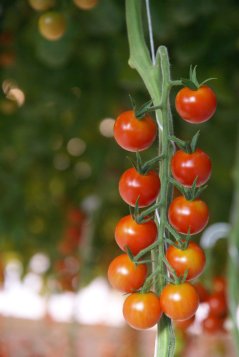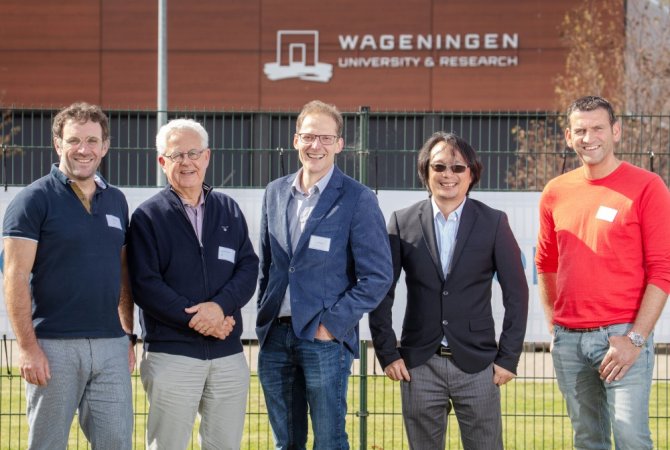
Project
Autonomous Greenhouses 2nd Edition
Computer scientists and horticultural experts form multidisciplinary teams to challenge themselves as well as the state of the art in human operated greenhouse production in order to make a large step towards the Autonomous Greenhouse. If the capabilities of an AI driven greenhouse can be demonstrated, it will imply a significant opportunity to drive horticultural productivity while reducing resource use and management complexity. AI might help us live healthier lives and make it possible to produce more vitamin rich food in greenhouses for growing human populations.
The Hackathon
WUR and Tencent attracted 21 teams with more than 200 participants and 26 nationalities to participate in the hackathon. Of many teams, a large number of team members were physically present at the WUR location Bleiswijk during the 24-hour hackathon. The other team members were connected to Bleiswijk online through Skype, telephone and mail. People worked enthusiastically, invented creative algorithms and used human brain power to grow tomatoes virtually in a digital game environment.
The goal of the Hackathon was to optimize net profit of a virtual tomato crop grown in a virtual greenhouse. For that tomato yield and product quality, thus income, had to be maximized on one side, while the use of resources such as energy, CO2 and water, thus costs, had to be minimized on the other side. The optimization had to be done using models of WUR of a virtual greenhouse and tomato crop using artificial intelligence algorithms.
Game-concept

The organizers had ensured that the models had so many possibilities that a "gaming" situation arose. For example, it was theoretically possible to achieve a financial profit that is ten times higher than growers can now achieve in practice. The crop sometimes reacted differently than expected in a practical situation. The teams themselves determine the ideal set points for temperature, amount of light, CO2 concentration and a number of cultivation-related parameters, such as plant and stem density. They did this using their own AI algorithms. From December onwards, the best 5 teams during the hackathon are selected to run a growing experiment in a real greenhouse with their AI algorithms. A tasty cherry tomato crop must then be grown remotely in 6 months.
The judgement
The competition consists of different parts: an international jury gave points for the team composition (20% of the points) and for their AI approach (30% of the points), the net profit that was achieved in the game to grow virtual tomatoes (50% of the points). 5 teams have been selected by the jury for the next round, in which they have to grow cherry tomatoes in a real greenhouse remotely.

Jury members from left to right: Marco Bressan, Gerrit van Straten, Leo Marcelis, Dijun Luo and Erik Vereijken
The growing experiment
The 5 selected teams will produce a cherry tomato crop remotely during the first half year of 2020. With as little input as possible in water, nutrients, energy and CO2 and with maximum production and fruit quality, they will optimize the net profit. Each team has a compartment of 96 m2 available in the high-tech greenhouses of Wageningen University & Research in Bleiswijk. The teams have made their own AI algorithms and will use them to determine the set points for temperature, amount of natural and artificial light, heating, CO2 concentration, fertigation and a number of cultivation-related parameters such as plant and stem density and fruit pruning.
Next to given standard sensors, the teams are allowed to install own sensors at the beginning of the experiment. These are sensors and cameras to measure additional crop, climate and fertigation related parameters. The respective information is received by the teams via a digital interface. At the same time teams send – based on their AI algorithms – setpoints back to the process computer, which finally takes the action on climate and fertilization in the experimental greenhouse. The teams are not allowed to enter the greenhouses themselves. The teams extract all data remotely and may adjust their algorithms for the software gradually. The software itself must adjust the set points if necessary. That way self-learning software can gradually take over people's decisions.
Winner of the Autonomous Greenhouse Challenge (2nd edition)
The winner of the challenge was team Automatoes, a team consisting of employees, researchers and students from Van der Hoeven Horticultural Projects, Hoogendoorn Growth Management, Keygene and TU Delft.
Results
- Unfortunately, your cookie settings do not allow videos to be displayed. - check your settings
- Unfortunately, your cookie settings do not allow videos to be displayed. - check your settings
- Unfortunately, your cookie settings do not allow videos to be displayed. - check your settings
- Unfortunately, your cookie settings do not allow videos to be displayed. - check your settings
- Unfortunately, your cookie settings do not allow videos to be displayed. - check your settings





